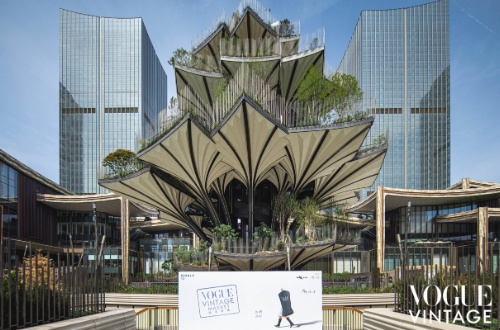Global Times: Chinese-built hydropower station lights up homes of remote Lao village, dreams of prosperity
 2024-12-24
2024-12-24
 Yahoo Finance
Yahoo Finance
In today's world, green has become the defining color of the New Era in China, with green development emerging as a significant feature of Chinese modernization. Green development, which seeks to promote harmony between humanity and nature while maximizing economic and social benefits with minimal resource consumption, has now become a global consensus. China is actively implementing the concept of sustainable development and is playing a key role in driving the global transition toward a low-carbon future.
However, this year, the US launched a narrative of "overcapacity" against China's new energy sector as part of its unilateral trade protectionism. Against this backdrop, we launch the yearender 2024 series that casts a global gaze on the transformative power of China's green energy initiatives, illuminating how they empower individuals around the world to realize their dreams and foster hope and development.
In this inaugural piece, we turn our attention to the remarkable impact of China's clean hydropower on the marginalized and underdeveloped villages of Laos. This is a testament to the profound change that green energy can bring, lighting the path toward a brighter future for all.
In the heart of Laos, nestled among the rugged mountains, lies a village that once seemed to exist in a time capsule, thus far untouched by the modern world.
28-year-old To Vongphachan, a resident living in the newly established resettlement village near the Nam Phay hydropower plant in Laos, recalls the stark realities of his former life with vivid clarity. "Before the dam was built, our village was hidden deep in the mountains. We had no electricity and no mobile signal. Our lives revolved around farming and foraging for wild vegetables. If we needed salt or oil, we had to walk miles to the nearest village. Before high school, I couldn't even imagine what lay beyond those mountains."
Vongphachan's dreams of a better life were ignited during his high school years. "I promised myself that I would leave the mountains, find work, and ensure my children wouldn't have to walk such long distances for an education," he shared with the Global Times, with a sense of accomplishment radiating from his eyes. Today, that dream has become a reality, thanks to the transformative power of the Nam Phay hydropower plant, a project funded and built through Chinese investment.
The Nam Phay hydropower plant, located in Xaysomboun, home to the highest mountain in Laos, represents a significant shift for a region that has long been characterized for its isolation and underdevelopment. Before the establishment of the province in late 2013, Xaysomboun was a typical mountainous area, home to various ethnic minorities who lived in relative obscurity. The local economy was stagnant, with many residents relying on subsistence farming and traditional hunting methods, and their homes were often little more than makeshift structures woven from vines.
The hydropower project, initiated almost simultaneously with the province's establishment, has brought about developments. "For many in our community, the idea of modern infrastructure was a distant dream," Vongphachan told the Global Times. "But now, we see the changes unfolding before our eyes." The dam, which began operations in May 2017, has not only provided a reliable source of electricity - accounting for about 10 percent of the region's total power consumption - but has also opened doors to economic opportunities previously thought unattainable.
As the sun rises over the mountains, casting a golden hue on the landscape, the once-silent village is now alive with the hum of activity. Children, no longer burdened by the long trek to school, can be seen playing in the streets, with laughter echoing through the air, Vongphachan described the daily scenes in the village to the Global Times. Families are beginning to invest in small businesses, and the local market is bustling with vendors selling fresh produce and goods, a stark contrast to the days when the villagers had to rely solely on their own harvests.
The dam has not only illuminated homes but has also sparked a sense of hope among the villagers. "We are no longer just surviving; we are thriving," Vongphachan noted. "This project has changed our lives in ways we never thought possible."
As Laos continues to harness its abundant water resources, the vision of becoming Southeast Asia's "battery" is slowly materializing. The Nam Phay hydropower plant stands as a testament to the power of collaboration and investment in infrastructure, bridging the gap between the past and a brighter future.
Liberation from labor: Green energy symbolizes hope
The newly established village, born from the necessity of relocation due to the reservoir constructed by the Nam Phay Power Company - a joint venture co-founded by China's Norinco International and its Lao partner, has built a modern settlement complete with water, electricity, and roads for three affected villages. Schools, administrative offices, and cultural spaces have been thoughtfully integrated, creating a vibrant hub for the displaced.
For 21-year-old Vangkeobouddavong, the changes have been nothing short of miraculous. "The roads are open now, allowing our children to venture beyond the mountains, and bringing in new faces and opportunities." She reflects on her past, recalling the days when her family relied on candles and oil lamps for light. "When I was in high school, we had to walk 40 kilometers to school, returning home only every three months. Now, we have high schools in our village, and the quality of education has improved significantly. I can go home every day."
The transformation extends beyond education. "We now have hospitals in the village, allowing us to receive timely medical care instead of traveling long distances to find a doctor," she added.
The arrival of electricity has ushered in a new era of convenience. "We can now use household appliances like refrigerators and washing machines, making life much easier. We watch the news, enjoy TV shows, and stay connected to the world," she told the Global Times.
The impact of stable electricity on agricultural practices has been profound. "We can now use rice milling machines and water pumps, which has drastically reduced the time and effort required for farming. It's no longer just manual labor; we have electric tools that make our work faster and less exhausting," she said.
For Vangkeobouddavong, the dam represents more than just infrastructure; it embodies a green dream. "This is part of China's global initiative to promote clean energy, helping countries move away from traditional coal power. For us, green energy symbolizes hope," she said when sharing some of the concepts learned from TV programs.
"Now, we can sell the rice we grow and the livestock we raise. Many villagers have found work nearby, and our community is noticeably more prosperous. Most families own appliances, and many have motorcycles or even tractors," she noted.
"This not only makes travel easier but also boosts the sale of our agricultural products, increasing our income," she explained.
From dam to dollar: Hydropower plant fuels economic growth
The Nam Phay hydropower plant not only heralds a new era for local residents but also serves as a catalyst for economic growth, empowering businesses to convert natural resource advantages into tangible economic benefits.
Ma Yulong, the general manager of Nam Phay Power Company in Laos, told the Global Times that the dam has significantly boosted employment opportunities and improved income levels for the community.
Historically, this region has been rich in mineral resources including copper, gold, and iron, but it has suffered from inadequate and unreliable electricity supply. During the dry season, power outages and voltage fluctuations were commonplace, hampering productivity and stifling growth. The electricity was sourced from distant power stations, leading to substantial energy losses during transmission, which in turn inflated operational costs for local mining enterprises.
The Nam Phay hydropower plant, with its impressive annual regulation capacity, has changed the game. It provides a steady and reliable energy supply, attracting foreign investment and facilitating the exploration and development of Laos' mineral wealth. This transformation is not just about energy; it is about harnessing resources to drive economic development and create jobs, thereby lifting local residents out of poverty.
Moreover, the construction and operation of the hydropower station have spurred the growth of related industries, including construction, transportation, and maintenance services. These sectors have diversified the local economy and created job opportunities for residents. The ripple effects of the station's energy supply extend beyond Laos, fostering regional economic integration and laying a solid foundation for sustainable development, according to Ma.
After helping them move to the new home, the company has taken significant steps to help villagers restore their livelihoods. Initiatives include providing food during the transition period, offering living subsidies, and hiring experts to train locals in essential skills. The company has actively encouraged villagers to engage in livelihood reconstruction, assisting each household in cultivating 0.6 hectares of rice paddies and establishing demonstration gardens for sustainable farming practices. Regular releases of fish fry into local reservoirs have also provided villagers with additional income through fishing, the manager said.
The ethos of green and sustainable development has taken root in the hearts of the villagers, blossoming like a seed planted in fertile soil. This vision of a greener future has permeated the community, enriching not just the land but the lives of countless families.
According to statistics provided by Ma, the average annual income of local households has surged from $1,029 in 2014 to $4,907 in 2018, a testament to the transformative power of the hydropower project.
The bridge built by this green dream embodies principles of equality, respect, and dialogue. Since the project's inception, the Nam Phay Power Company in Laos has employed staff fluent in local languages and familiar with the culture to gather community feedback, ensuring open lines of communication. Regular visits to nearby villages foster engagement, allowing residents to voice their concerns and participate in discussions about the dam's operations.
In this vibrant community by the Nam Phay dam, the echoes of the past are fading, replaced by the sounds of laughter, learning, and a shared vision for a prosperous tomorrow.
For the local villagers, the arrival of clean energy has brought them closer to their dreams, illuminating a path toward a brighter, more sustainable future.
View original content: https://www.globaltimes.cn/page/202412/1325272.shtml
Company: Global Times
Contact Person: Xie Wenting
Email: xiewenting@globaltimes.com.cn
Website: https://www.globaltimes.cn/
Telephone: 18605648116
City: Beijing




